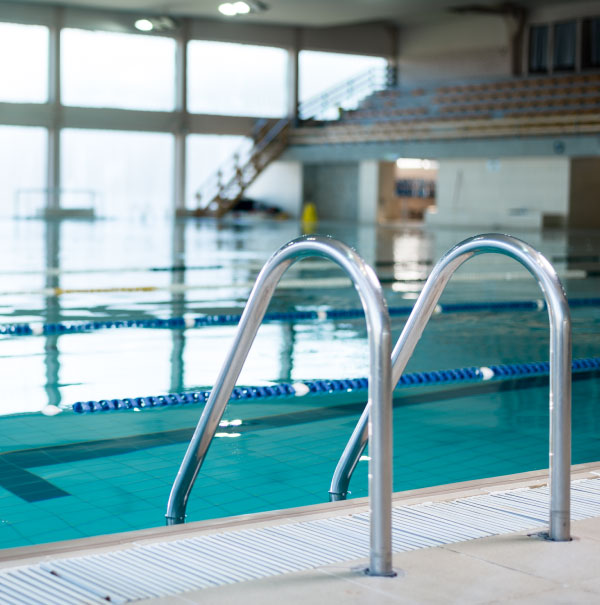
Time and time again, we’ve been asked to solve the biggest challenges with the indoor pool environment. Based on our extensive experience in pool dehumidification, we’ve identified the top five challenges of indoor pools, their typical causes, and how to best solve them.
Here’s challenge number five…
Dehumidifier Equipment Needs Frequent Repairs
Indoor pool dehumidifiers used in many indoor pools are precision pieces of equipment. From the materials they are constructed with, to their actual layout and inner workings, they vary in numerous ways from other types of HVAC equipment like air handlers and air conditioners. The environment they operate in is also significantly different than other HVAC systems.
These two facts mean that there are not many service technicians with deep knowledge when it comes to diagnosing and repairing indoor pool dehumidifiers. Often, basic problems can be overlooked and many service visits only see resolution after the manufacturer’s customer support department gets involved.
To help you avoid expensive and unnecessary service company visits, here are some things to consider when you experience challenges with your indoor pool dehumidifier.
Finding the Reason
Anytime you experience an operational challenge related to the pool environment, you should think of the dehumidifier. The first question to ask is whether the dehumidifier is operable.
- How old is the unit?
- Is it blowing air as intended?
- Are any of the fans impeded? They may need a belt replacement, if applicable, or could be blocked by foreign objects.
- Have any parts failed?
- Is there major corrosion on key parts such as the coils?
- Are the filters still good or do they need replacement? It’s recommended to change them about once per quarter.
- Has fluid or refrigerant leaked?
- Is the outdoor condenser experiencing any similar issues? For example, it may be blocked by some debris that should be cleared away.
The older the unit, the more likely there is a mechanical issue to blame. It’s always recommended to periodically inspect and maintain the dehumidifier to keep track of any issues that may arise and prevent as many as possible. Preventative maintenance is always the best kind of maintenance.
If there is a mechanical or electrical problem with the dehumidifier, it should be addressed by a qualified service technician.

Check the Conditions
Before you call in a service company or contact warranty support, double-check the dehumidifier’s operating conditions. What space conditions (air temperature and RH, plus water temperature) is it currently set to maintain? Compare these to what the unit was designed to maintain (usually on the nameplate). If they are different, then the dehumidifier should be reset to follow what it was originally designed for.
We have observed many facilities turn down their space conditions over the years, often at the request of patrons. While it’s true that patron comfort should always be the priority, unfortunately once a pool has been designed for a certain set of conditions, there are negative things that happen when setpoints get changed. For example, if you lower the air temperature by just a couple of degrees the water will increase its evaporation rate. The result will be higher operating costs to heat the water as well as, ironically, patron discomfort (as patrons exiting the pool will feel chilled as the water on their skin evaporates quicker).
Are the Filters Dirty?
Dehumidifier coils are much deeper than standard air conditioner coils, which helps them effectively condense moisture out of the air. It also makes them hard to clean thoroughly if any foreign particles get into them. Therefore, it’s extremely important the air filters are changed consistently to prevent that from happening.
It’s also important to note that dirty filters can impede airflow over the coil, which can cause inefficiency and potentially lead to trips on low pressure. This could potentially damage your unit!
The good news is that filters are inexpensive and well worth the price of regular replacement, compared to what it will cost the operator through inefficiencies caused by dirty coils. Refer to the stickers on the equipment or submittal documents for the type of filter equipped (or inspect the filters themselves). Any number of local stores may sell suitable replacements. Check filters for replacement at least once per quarter.
Ductwork
If it doesn’t seem like there is a problem with the dehumidifier itself, you may be experiencing an air distribution issue as noted in Challenge #2.
When to Replace?
One good time to replace is near the end of the normal life cycle when several other issues you want to fix have been identified. Bundling the work can be more efficient and easier to get funding for since you can show numerous problems will be resolved.
The normal lifespan of a high-quality dehumidifier is 10–15 years. In perfect conditions, they can last much longer. We’ve seen some still in great shape beyond the 20-year horizon. When to replace is entirely reliant on what condition the unit is in.
Cheaper dehumidifiers tend to have a shorter lifespan because they are built with lower-end components and use fewer corrosion protections. A five-year replacement cycle is common.
In many ways, a dehumidifier is like a car in terms of knowing when to replace. If the unit is constantly raising alarms and shutting down, frequently needing repairs and losing major components like coils or compressors, then it’s probably time to replace. Like a car, the repair bills add up and eventually it would be cheaper to buy a whole new machine rather than replace yet another compressor.
